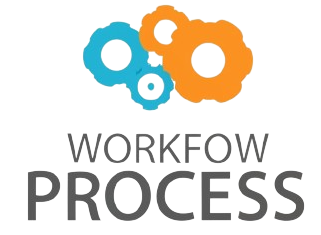Governance challenges with self-driving and agentic AI technologies have become a pivotal concern as these advanced systems increasingly integrate into critical areas of society. Self-driving vehicles and agentic AI, capable of autonomous decision-making, promise transformative benefits—from reducing traffic accidents to optimizing industrial processes. However, the rapid deployment of these technologies also exposes significant regulatory, ethical, and technical governance challenges. Policymakers face the difficult task of balancing innovation incentives with ensuring safety, transparency, and accountability. This article explores the core governance issues surrounding self-driving cars and agentic AI, focusing on regulation complexities, ethical dilemmas, liability concerns, and the need for robust oversight mechanisms. Understanding these interconnected challenges is essential to crafting effective policies that support innovation while protecting public interests.
Regulatory complexities in autonomous systems
One of the most pressing governance challenges is establishing clear regulatory frameworks for self-driving and agentic AI technologies. Unlike traditional products, these systems operate with a high degree of autonomy, making it difficult to apply existing rules designed for human-driven vehicles or software tools. Regulators must address questions such as:
- How to certify AI systems that continuously learn and evolve?
- What standards should autonomous vehicles meet before public roads are accessible?
- How to ensure interoperability between different AI agents and legacy infrastructure?
These challenges call for adaptive regulations that balance flexibility with safety. Some governments have initiated pilot programs and sandbox environments to test new rules, but global regulatory harmonization remains elusive, complicating cross-border deployment.
Ethical dilemmas in decision-making autonomy
Agentic AI technologies raise profound ethical concerns due to their ability to make decisions independently, often in ambiguous and unpredictable scenarios. For example, self-driving cars might face situations where collision avoidance requires prioritizing one life over another. Key issues include:
- Embedding ethical principles into AI decision algorithms.
- Transparency of AI decision-making pathways to stakeholders.
- Ensuring fairness and preventing discrimination embedded in training data.
Addressing these dilemmas requires multidisciplinary collaboration, bringing ethicists, engineers, policymakers, and civil society together to define acceptable norms and oversight processes. Without clear ethical guidelines, public trust in these systems may erode.
Liability and accountability in autonomous operations
Determining liability when self-driving vehicles or agentic AI systems cause harm is a complex legal challenge. Traditional frameworks rely on human fault or negligence, which may not directly apply when decisions are automated or partially human-supervised. Important questions include:
| Aspect | Challenge | Potential approaches |
|---|---|---|
| Liability assignment | Who is responsible? Manufacturer, user, software developer? | Creating strict product liability laws or shared liability models. |
| Insurance frameworks | Adapting insurance to cover AI-driven incidents. | Developing AI-specific insurance products. |
| Transparency | Obtaining diagnostic data from AI to establish fault. | Mandating black-box recording devices for AI operations. |
Clear liability rules are necessary to incentivize safety improvements and provide recourse for affected parties, but must also avoid stifling innovation.
Governance through oversight and continuous monitoring
Effective governance of self-driving and agentic AI technologies demands ongoing oversight rather than one-time approvals. Continuous performance monitoring helps detect system failures, bias drift, and security vulnerabilities over time. Central components of such governance include:
- Periodic audits of AI algorithms and datasets.
- Incident reporting systems to track malfunctions or accidents.
- Dynamic regulation that evolves with technological advances.
- Global cooperation frameworks to share best practices and standards.
Incorporating feedback loops between developers, regulators, and users will be crucial to creating resilient governance ecosystems that adapt as AI capabilities expand.
Conclusion
Governance challenges associated with self-driving and agentic AI technologies are multifaceted, involving regulatory, ethical, legal, and operational complexities. Developing effective policies requires a nuanced understanding of how autonomous systems function and interact with human environments. Regulators must craft flexible, adaptive frameworks that address safety without stifling innovation, while also confronting the ethical dilemmas embedded in AI decision-making processes. Clear liability mechanisms and insurance models need to be established to ensure accountability. Most importantly, governance should not be static; it demands continual oversight, transparent monitoring, and international collaboration to respond to evolving risks and technologies. Successfully navigating these challenges will allow society to harness the benefits of autonomous AI systems while safeguarding public interests and trust.
